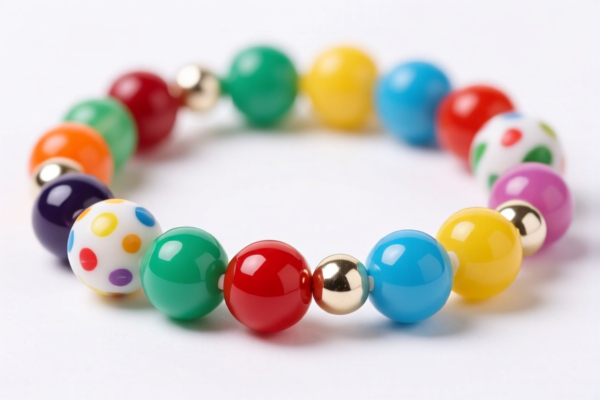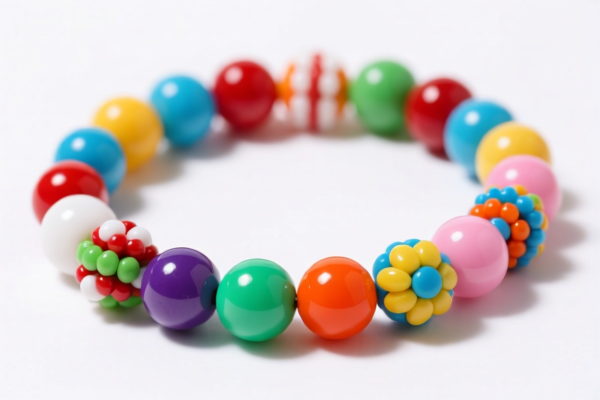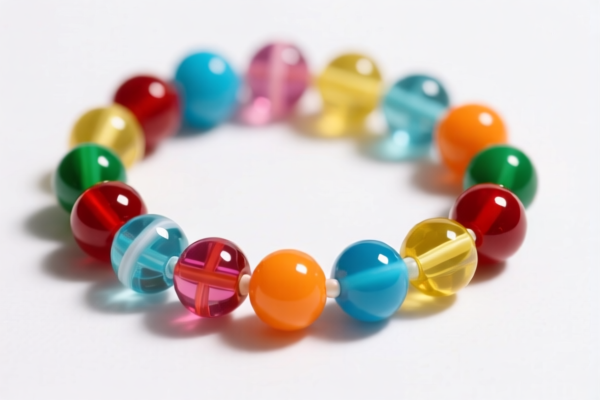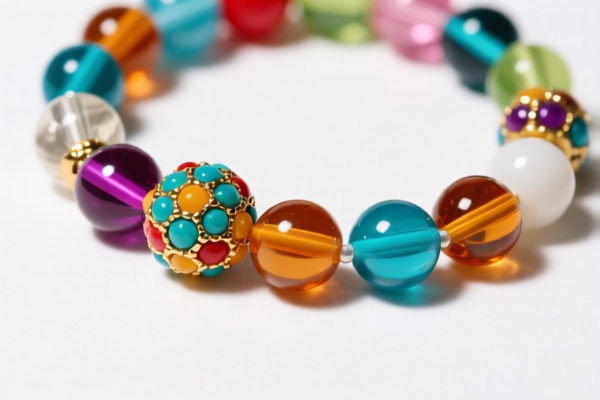| HS Code | Official Doc | Tariff Rate | Origin | Destination | Effective Date |
|---|---|---|---|---|---|
| 3906905000 | Doc | 59.2% | CN | US | 2025-05-12 |
| 3926903300 | Doc | 36.5% | CN | US | 2025-05-12 |
| 3926909910 | Doc | 42.8% | CN | US | 2025-05-12 |
| 7117907500 | Doc | 30.0% | CN | US | 2025-05-12 |
| 7117905500 | Doc | 44.7% | CN | US | 2025-05-12 |




Acrylic Beads
Acrylic beads are a versatile crafting component widely used in jewelry making, decorative projects, and various art forms. They are known for their affordability, wide range of colors and shapes, and ease of use.
Material
Acrylic beads are manufactured from polymethyl methacrylate (PMMA), a synthetic polymer. This plastic is known for its transparency, durability, and resistance to weathering. They are not natural gemstones; instead, they are molded and polished to resemble glass, stone, or other materials.
Purpose
The primary purpose of acrylic beads is for decorative applications. They serve as central elements in:
- Jewelry Making: Necklaces, bracelets, earrings, anklets, and rings.
- Embellishments: Decorating clothing, handbags, shoes, and other accessories.
- Arts & Crafts: Creating mosaics, sculptures, keychains, and home décor items.
- Party Supplies: Used in garlands, centerpieces, and other festive decorations.
- Children’s Crafts: Due to their safety and low cost, they are popular for kids' projects.
Function
Acrylic beads function primarily as aesthetic components. Their visual properties contribute to the overall design of a project. They offer:
- Color: Available in a vast spectrum of colors, including transparent, opaque, iridescent, and metallic finishes.
- Shape: Come in numerous shapes, adding textural and visual interest.
- Light Transmission: Transparent beads allow light to pass through, creating unique effects.
- Affordability: Provide a cost-effective alternative to gemstones or glass beads.
- Light Weight: Contribute minimal weight to finished projects.
Usage Scenarios
- Stringing: Beads are threaded onto string, wire, or elastic to create jewelry.
- Adhering: Glued onto surfaces for embellishment or mosaic work.
- Wire-Wrapping: Beads are secured with wire to create intricate designs.
- Bead Looming: Used in bead weaving techniques to create patterns.
- Sculpting: Combined with other materials to form three-dimensional objects.
Common Types
- Round Beads: The most common shape, available in various sizes.
- Cube Beads: Square-shaped beads, often used for geometric designs.
- Tube Beads: Cylindrical beads, ideal for creating spacer beads or unique patterns.
- Flower Beads: Shaped like flowers, used for floral arrangements or feminine designs.
- Heart Beads: Shaped like hearts, popular for Valentine's Day or romantic projects.
- Alphabet Beads: Feature letters, used for creating personalized messages or names.
- Faceted Beads: Cut with multiple flat surfaces to enhance light reflection.
- Pearl Beads: Imitate the look of pearls, often used in classic jewelry designs.
- Crystal Beads: Designed to resemble crystals, offering a sparkling effect.
- Glow-in-the-Dark Beads: Emit light after being exposed to light, ideal for novelty projects.
Acrylic beads fall under classifications related to acrylic polymers and articles of plastics. Here's a breakdown of relevant HS codes based on the provided information:
-
3906905000: This HS code covers Acrylic polymers in primary forms: Other: Other: Other. This classification applies to the raw acrylic material itself, before it is processed into beads. The total tax rate is 59.2%, comprised of a 4.2% base tariff, a 25.0% additional tariff, increasing to 30.0% after April 2, 2025.
-
3926903300: This HS code covers Other articles of plastics and articles of other materials of headings 3901 to 3914: Other: Beads, bugles and spangles, not strung (except temporarily) and not set; articles thereof, not elsewhere specified or included: Handbags. While this code specifically mentions "Handbags", it also includes "Beads, bugles and spangles, not strung (except temporarily) and not set". The total tax rate is 36.5%, consisting of a 6.5% base tariff and a 30.0% additional tariff effective after April 2, 2025.
-
7117907500: This HS code covers Imitation jewelry: Other: Other: Valued over 20 cents per dozen pieces or parts: Other: Of plastics. If the acrylic beads are considered imitation jewelry and valued at over 20 cents per dozen pieces, this classification applies. The total tax rate is 30.0%, consisting of a 0.0% base tariff and a 30.0% additional tariff effective after April 2, 2025.
-
7117905500: This HS code covers Imitation jewelry: Other: Other: Valued not over 20 cents per dozen pieces or parts: Other. If the acrylic beads are considered imitation jewelry and valued at not over 20 cents per dozen pieces, this classification applies. The total tax rate is 44.7%, consisting of a 7.2% base tariff, a 7.5% additional tariff, and a 30.0% additional tariff effective after April 2, 2025.
It is important to determine whether the acrylic beads are considered imitation jewelry and their value per dozen pieces to select the correct HS code.
Customer Reviews
No reviews yet.